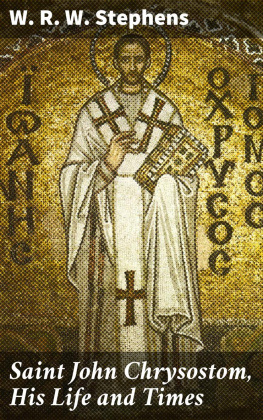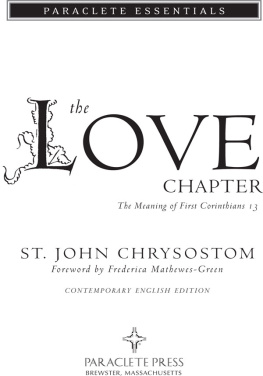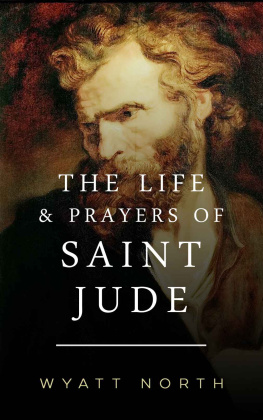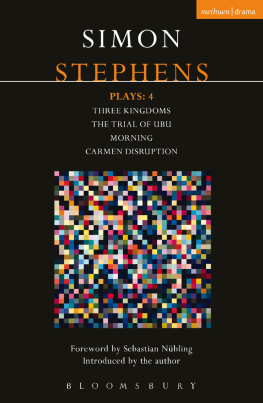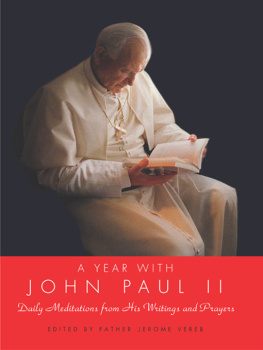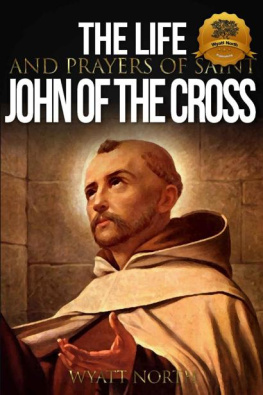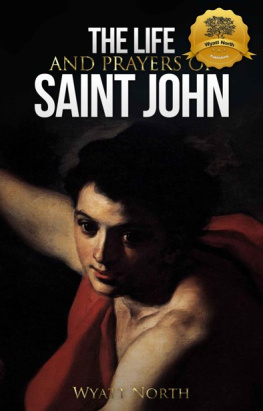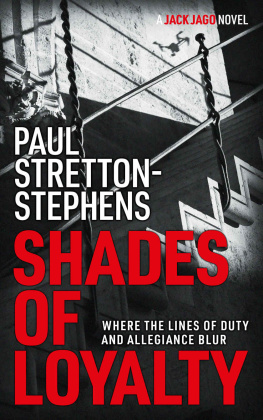PREFACE TO THE FIRST EDITION.
Table of Contents
The considerations which induced me to undertake this monograph are mentioned in the introductory chapter. How far the design there indicated has been satisfactorily fulfilled, it is for others to decide. I am of course conscious of defects, for every workmans ideal aim should be higher than what he can actually accomplish. The work has incurred a certain risk from having been once or twice suspended for a considerable period; but I have always returned to it with increased interest and pleasure, nor can I charge myself with having wittingly bestowed less pains on one part than another. I have endeavoured to make it a trustworthy narrative by drawing from the most original sources to which I could gain access; and where, as in those portions which touch on secular history, the lead of general historians, such as Gibbon or De Broglie has been followed, I have, as far as possible, consulted the authorities to which they refer. To modern authors from whom I have derived valuable assistance for special parts of the work, such as M. Amde Thierry and Dr. Foerster, my obligations are acknowledged in their proper place.
Neanders Life of St. Chrysostom has, of course, throughout been frequently consulted. It is marked by the customary merits and defects of that historian. It is full of research, information, thought, and refined religious sentiment; but he fails to bring out strongly the personality of his subject. We have abundance of Chrysostoms sayings and opinions, but somehow too little of Chrysostom himself. The fact is that Neander seems always to be thinking more of those views and theories about the growth of Christian doctrine and the Church, which he wishes to impress upon mens minds, than of the person about whom he is writing. Thus, the subject of his biography becomes too much a mere vehicle for conveying Neanders own opinions, and the personality of the character fades away in proportion. Some passages in the life of his subject are related at inordinate length; others, because less illustrative of Neanders views, are imperfectly sketched, if not omitted.
In extracts from the works of Chrysostom, the somewhat difficult question of the comparative advantages of translation and paraphrase has been decided, on the whole, in favour of the latter. The condensation of matter gained by a paraphrase is an important, indeed necessary, object, if many specimens are to be given from such a very voluminous author as Chrysostom. A careful endeavour, at the same time, has been made to render faithfully the general sense of the original; and wherever the peculiar beauty of the language or the importance of the subject seemed to demand it, a translation has been given.
From an early date in the sixteenth century down to the present time the works of Chrysostom have occupied the attention of learned editors. The first attempts, after the invention of printing, were mainly confined to Latin translations of different portions. Afterwards appeared
(1.) In 1529 the Greek text of the Homilies on St. Paul, published at Vienna, typis Stephani et fratrum, with a preface by Maximus Donatus. This was followed by the Commentaries on the New Testament, published by Commelin, a printer at Heidelberg, four vols. folio, A.D. 15911602.
(2.) In 1612 appeared a magnificent edition of the whole works, in eight thick folio volumes, printed at Eton, and prepared by Sir Henry Savile. Savile, born in 1549, was equally distinguished for his knowledge of mathematics and Greek, in which he acted for a time as tutor to Queen Elizabeth. He became Warden of Merton in 1585, and Provost of Eton in 1596. Promotion in Church and State was offered to him by James I. , but declined, though he accepted a knighthood in 1604. His only son died about that time, and he devoted his fortune henceforth entirely to the promotion of learning. The Savilian Professorships of Geometry and Astronomy in Oxford were founded by him, and a library furnished with mathematical books for the use of his Professors. He spared no labour or expense to make his edition of St. Chrysostom handsome and complete. He personally examined most of the great libraries in Europe for mss., and, through the kindness of English ambassadors and eminent men of learning abroad, his copyists were admitted to the libraries of Paris, Basle, Augsburg, Munich, Vienna, and other cities. He used the Commelinian edition as his printers copy, carefully compared with five mss., the various readings of which are marked (by a not very distinct plan) in the margin. The chief value of the work consists in the prefaces and notes, contributed some of them by Casaubon and other learned men, though by far the best are Saviles own. The whole cost of bringing out this grand edition is said to have been 8000. Saviles wife was so jealous of her husbands attachment to the work that she threatened to burn it.
(3.) Meanwhile, Fronton le Duc, a French Jesuit, had been labouring independently, but in most amicable intercourse with Savile, not only to edit the works of Chrysostom complete, but accompanied by a Latin translation, which he supplied himself for those pieces of which he failed to find any good one already existing. His death arrested the work, which was taken up, after a time, by the two brothers, Frederick and Claude Morel, and completed by the latter in 1633. It was published in Paris in 1636, in twelve large folio volumes. The Commelinian was again used as the printers copy, with fewer alterations than in the edition of Savile.
(4.) We now come to the great Benedictine edition, prepared under the care of Bernard de Montfaucon, who deserted the profession of arms at the age of twenty to become, as a member of the brotherhood of St. Maur, one of the most marvellously industrious workers in literature that the world has ever seen. In 1698, when the Benedictines had completed their editions of SS. Augustine and Athanasius, they began to prepare for an edition of Chrysostom, which they had intended to do for more than thirty years. Montfaucon was sent to Italy, where he spent three years in examining libraries; and, on his return, obtained leave from the presidents of the congregation to employ four or five of the brethren in collating mss. in the Royal Library at Paris, and in those of Colbert and Coislin. Their labours extended over thirteen years; more than 300 MSS. , containing different portions of Chrysostoms works, having been discovered in those libraries. Montfaucon, meanwhile, corresponded with learned men in all parts of Europe, in order to procure materials and further collations. His correspondents in England were Potter, Bishop of Oxford, Bentley, and Needham; and in Ireland, Godwin, Bishop of Kilmore. The result was that, after more than twenty years of incessant toil, Montfaucon produced an edition, in which several pieces saw the light for the first time, and others, imperfect in previous editions, were presented entire. The text after all is the least satisfactory part of the work. Mr. Field has discovered that the eight principal MSS. employed were not very carefully collated, and that, though Saviles text is extremely praised, that of Morel, by a curious inconsistency, is most closely followed, which is little more than a reproduction of the original Commelinian. The main value of the edition consists in the prefaces, written by Montfaucon to every set of homilies and every treatise, in which the chronology, contents, and character of the composition are most fully and ably discussed. The chronological arrangement also of the pieces is a great improvement on the editions of Savile and Fronton le Duc, who had made no attempt of that kind. The last volume, the thirteenth, contains a life of St. Chrysostom, a most copious index, and dissertations on the doctrine, discipline, and heresies prevalent in his age, illustrated by notices collected from his works. On the whole, the edition must be pronounced a marvellous monument of ability and industry, especially when it is considered that at the date of its completion, 1738, Montfaucon was eighty-three years of age, and had been engaged for upwards of fifty years in literary work of a most laborious description. He died in 1741.


